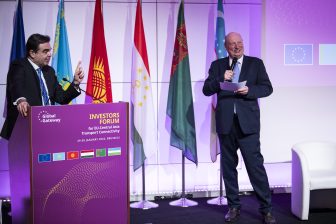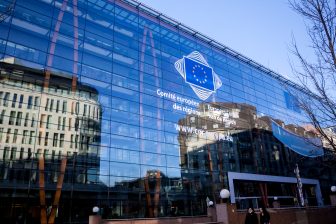
‘Electronic freight document should not be the new ERTMS’
When implementing legislation with the aim of enhancing the use of electronic freight documents in the European Union, this should be completely harmonised. If implementation is only partially harmonised, we will see fragmented and costly solutions in a similar manner as we see with the implementation of ERTMS, warned the International Union for Road-Rail Combined Transport (UIRR).
The interest group responds to the proposal (published on 17 May 2018) of the European Commission for a new regulation concerning electronic Freight Transport Information (eFTI) as part of the Third Mobility Package. The Regulation, would oblige Member States to compel their authorities to receive and process freight transport-related information in electronic form.
Compliance costs
“The proposal addresses an aspect of digitalisation in European freight logistics that promises productivity enhancements and a reduction of transmission errors. It promises also some benefits for the economy and the environment”, described the UIRR.
The legislative procedure, however, does not come without its costs, it continues. “According to the Commission, the compliance costs, i.e. the adaptation of the processes and the IT environment, are expected to be in the range of 4.4 billion Euros. The change from a paper- to a fully electronic-based forwarding of transport-related regulatory information will also incur enormous costs for the intermodal industry. The implementation of eFTI must therefore yield concrete benefits for the businesses involved.”
Harmonisation
To fulfil these objectives, the Regulation must ensure a simplification and a standardisation of the means how transport-related information shall be conveyed to authorities electronically. The commitment of Member States must be obtained to implement these within their authorities having to apply the Regulation, the organisation argues.
“The risk of permitting Member States to implement a solution that is only “partially harmonised”, and therefore not compliant with a single Europe-wide standard, must be prevented. ERTMS and TAF-TSI are negative examples in this regard. The European intermodal sector wants to avoid the emergence of fragmented and costly solutions with an undesirable delay.”
Lack of progress
The absence of a uniform legal framework at Union level requiring public authorities to accept relevant freight transport information, required by legislation, in electronic form, is considered to be the main reason for the lack of progress towards the simplification and greater efficiency made possible by available electronic means, said the European Commission in its proposal.
The paper documentation of transport chains constitutes an expense burden as high as 10-15 per cent of the total cost of the operation. A substantial portion of this cost may be saved through eFTI, while the performance of administrative functions and of enforcement actions could simultaneously be improved.
Also read:





